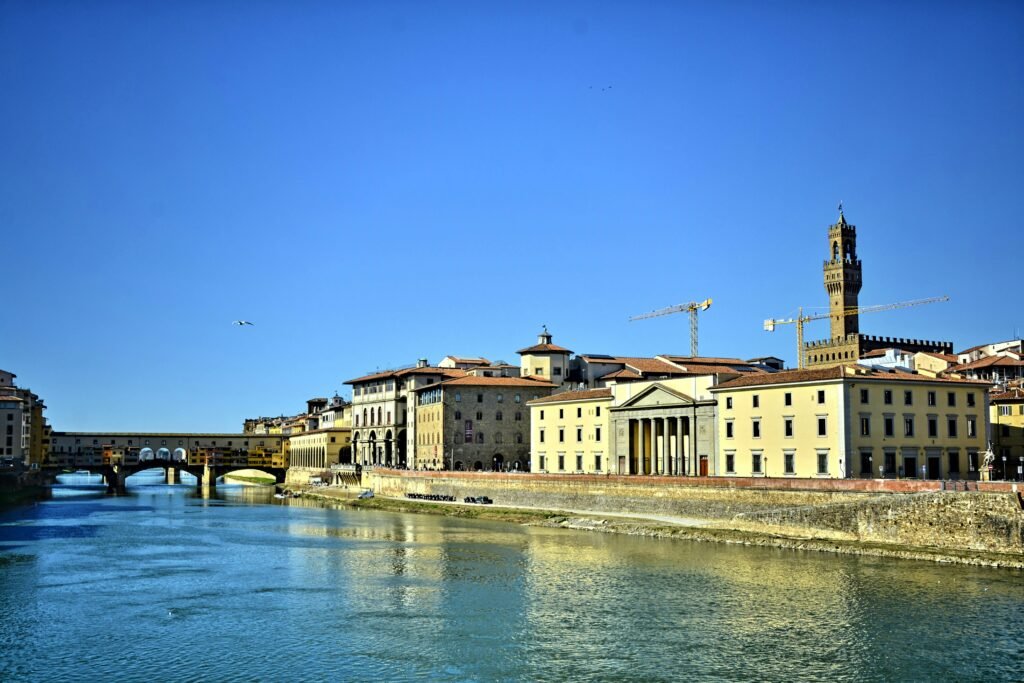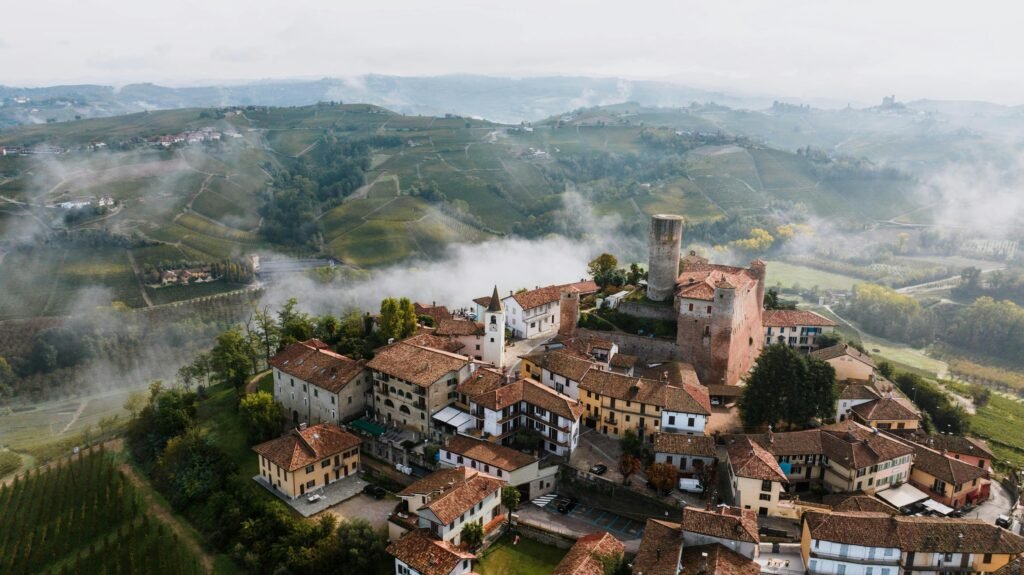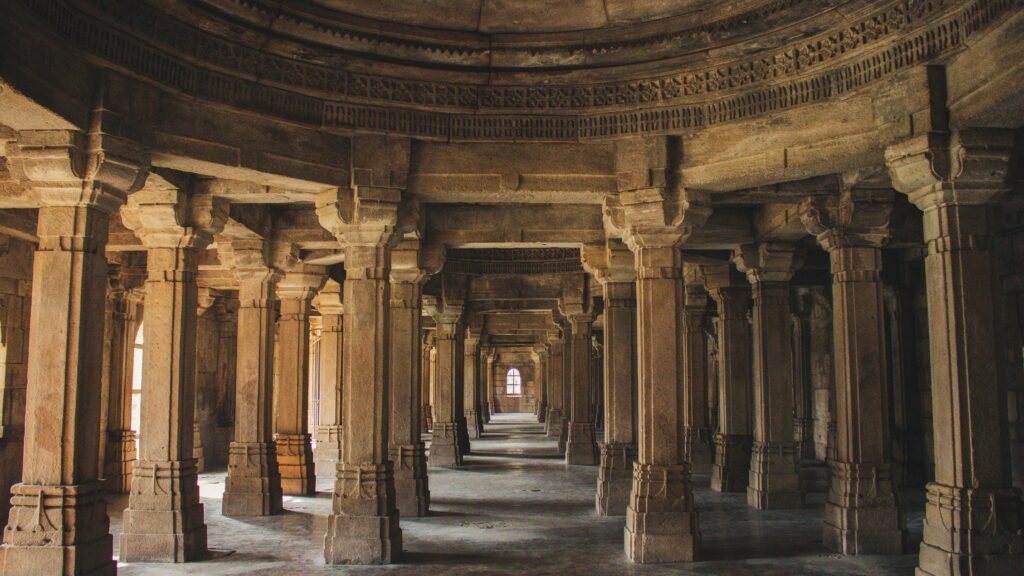The Vasari Corridor isn’t just some random architectural curiosity.
This elevated walkway represents one of the most ingenious examples of Renaissance engineering and political power play you’ll ever encounter.
Built in just five months during the 16th century, it allowed Florence’s ruling Medici family to move between their residences without ever setting foot on public streets.
The Medici Family’s Need for a Secret Passage
When I first started researching the Medici dynasty, I was honestly blown away by how paranoid these guys were. And honestly? They had good reason to be!
The Vasari Corridor was commissioned by Cosimo I de’ Medici in 1565, and let me tell you, this wasn’t just about convenience. The Medicis had plenty of enemies, and walking through Florence’s crowded streets was basically like painting a target on your back.
Political Tensions and Security Concerns
Back in the 16th century, Florence was a hotbed of political intrigue. The Medici family had consolidated power, but that didn’t mean everyone was happy about it. Rival families, foreign diplomats, and even common citizens sometimes posed threats to the ruling dynasty.
I remember reading about several assassination attempts on Medici family members throughout their reign. The famous Pazzi Conspiracy of 1478 had already shown how vulnerable the family could be in public spaces. Even though that happened before the corridor was built, the memory of Lorenzo de’ Medici barely escaping with his life while his brother Giuliano was murdered in the Florence Cathedral definitely influenced later security decisions.
The corridor solved this problem brilliantly. Instead of traveling with large entourages of guards through narrow medieval streets, the Medicis could simply walk from their private residence at Palazzo Pitti to their government offices at Palazzo Vecchio completely unseen.
Marriage Celebrations and Royal Visits
Here’s something that really surprised me when I dug deeper into the history – the corridor was actually built for a wedding! Cosimo I commissioned it for his son Francesco’s marriage to Joanna of Austria in 1565.
Think about it from a practical standpoint. You’re hosting European royalty for a major celebration, and you need to move important guests safely between venues. The corridor provided the perfect solution, allowing dignitaries to travel elevated above the crowds and potential threats below.
Giorgio Vasari: The Mastermind Behind the Design
Now let’s talk about the genius who actually designed this thing. Giorgio Vasari wasn’t just some random architect – this guy was basically the Renaissance equivalent of a celebrity designer!
I’ve always been fascinated by Vasari because he wasn’t just an architect. He was also a painter and, most importantly, an art historian. His book “Lives of the Most Eminent Painters, Sculptors, and Architects” is still considered one of the most important sources on Renaissance art today.
The Five-Month Construction Marvel
When Cosimo I told Vasari he needed this corridor built in five months, I can only imagine what went through the architect’s mind. Five months! To build a nearly one-kilometer elevated walkway through one of Europe’s most densely packed cities.
But here’s what makes Vasari brilliant – he didn’t try to reinvent the wheel. Instead, he used existing structures wherever possible. The corridor incorporates parts of existing buildings, follows rooflines, and cleverly navigates around obstacles rather than through them.
The construction required incredible coordination. Workers had to build supports, create covered walkways, and ensure the structure could handle not just foot traffic but also the weight of guards and potentially even horses in some sections.
Architectural Innovations and Challenges
One of the most impressive parts of the corridor’s design is how it crosses the Arno River. Rather than building a separate bridge, Vasari incorporated the corridor into the upper level of existing buildings along the Ponte Vecchio.
But here’s where it gets really interesting – the corridor had to navigate around the existing shops on the bridge. Originally, the Ponte Vecchio housed butcher shops, but when the corridor was built, these were relocated and replaced with goldsmiths and jewelers. Apparently, the Medicis didn’t want to smell meat while taking their royal strolls!
The Route: From Palace to Palace
Walking the corridor route today (well, when it’s open for tours) is like taking a journey through Renaissance Florence’s power structure. The path tells a story that goes way beyond just getting from point A to point B.
Starting Point: Palazzo Pitti
The corridor begins at Palazzo Pitti, which became the main Medici residence in the 16th century. This massive palace was originally built by a rival banking family, but the Medicis eventually acquired it and turned it into their primary home.
From Pitti, the corridor heads east toward the Arno River. This first section actually runs through the Boboli Gardens, giving royal travelers a pleasant view of manicured landscapes before entering the urban maze of Florence.
Crossing the Oltrarno District
As the corridor moves through the Oltrarno neighborhood (literally “beyond the Arno”), it passes over some of Florence’s most charming streets. This area was historically home to artisans and craftspeople – the kind of people who might have mixed feelings about their Medici overlords.
The corridor here runs along building rooftops and through upper floors, sometimes requiring residents to literally have a royal walkway passing through their homes. I can’t imagine what that must have been like for ordinary Florentines!
The Famous Ponte Vecchio Crossing
This is definitely the most iconic part of the entire corridor. When you’re standing on the Ponte Vecchio looking at those shuttered windows on the upper level, you’re looking at part of the Vasari Corridor.
The corridor runs along the eastern side of the bridge, elevated above the jewelry shops that line the structure today. Those small windows allowed the Medicis to peek down at the activity below without being seen themselves.
Final Approach to Palazzo Vecchio
The last section of the corridor is probably the most architecturally complex. It had to navigate around the Uffizi Gallery (which was being constructed around the same time) and connect to the Palazzo Vecchio, Florence’s city hall where the Medicis conducted government business.
This final stretch includes some of the corridor’s most ingenious engineering solutions, including supports that span busy streets and connections that integrate seamlessly with existing medieval buildings.
Art and Treasures Within the Corridor
Here’s something I didn’t expect when I first learned about the Vasari Corridor – it’s not just a walkway, it’s basically a kilometer-long art gallery! The Medicis didn’t just use this passage for transportation; they turned it into a showcase for their incredible art collection.
The Self-Portrait Collection
One of the most unique features of the corridor is its collection of artists’ self-portraits. This collection, which started in the 17th century, includes works by some of the most famous artists in history.
I remember being amazed when I learned that the collection includes self-portraits by artists like Rembrandt, Velázquez, and even modern artists like Chagall and Lichenstein. It’s like having a “who’s who” of art history all in one incredibly unique setting.
The idea behind the self-portrait collection is pretty brilliant when you think about it. Instead of just displaying random artworks, the corridor showcases how artists saw themselves across different time periods and styles.
Strategic Windows and Views
The corridor isn’t just about the art on the walls – the windows themselves offer some of the most spectacular views of Florence you can imagine. The Medicis strategically placed these openings to provide views of important landmarks and beautiful vistas.
From various points in the corridor, you can see the Duomo, the Palazzo Vecchio’s tower, and of course, the Arno River flowing beneath. These weren’t just random windows – they were carefully planned viewpoints that reminded travelers of the Medici’s dominion over the city.
Secret Rooms and Hidden Spaces
What really gets me excited about the corridor is all the secret spaces and hidden rooms built into its structure. Some of these were used for storage, others for guards, and some apparently served purposes that historians are still debating.
There are small chambers where guards could monitor different sections of the route, emergency exits that could be used if the main passage was compromised, and even areas where the Medicis could stop and conduct private meetings while traveling between palaces.
Decline and Restoration Over the Centuries
Like many Renaissance structures, the Vasari Corridor has had its ups and downs over the centuries. After the Medici line ended in the 18th century, the corridor’s importance declined significantly.
The Habsburg-Lorraine Period
When the Habsburg-Lorraine family took control of Florence in 1737, they continued using the corridor but didn’t maintain it with the same level of care as the Medicis. The structure began showing signs of wear, and some sections were actually modified or closed off entirely.
During this period, the corridor’s role shifted from being primarily a security measure to more of a curiosity. The new rulers were less concerned about assassination attempts and more interested in displaying their cultural sophistication.
World War II and Near Destruction
Here’s a story that still gives me chills – the Vasari Corridor almost didn’t survive World War II. In 1944, German forces were retreating from Florence and had orders to destroy all the bridges across the Arno River.
The Ponte Vecchio was saved thanks to the intervention of German consul Gerhard Wolf, but the corridor itself suffered damage from explosions that destroyed nearby medieval buildings. Some sections had to be rebuilt after the war using original architectural plans and techniques.
Modern Restoration Efforts
The most recent major restoration of the Vasari Corridor began in the early 2000s and has been ongoing for decades. This isn’t just about making the structure safe for tourists – it’s about preserving one of the world’s most unique architectural treasures.
The restoration work has revealed fascinating details about the original construction methods and has uncovered artwork and decorative elements that had been hidden for centuries. Modern conservation techniques are being used to stabilize the structure while maintaining its historical authenticity.
Visiting the Vasari Corridor Today
Now here’s the part that might frustrate you as much as it did me – visiting the Vasari Corridor isn’t as simple as buying a ticket and showing up. This place is still genuinely exclusive, and getting inside requires some planning.
Current Access and Tour Information
As of 2025, the corridor is open for guided tours, but with significant restrictions. The Uffizi Gallery manages access, and tours are typically limited to small groups with advance reservations required weeks or even months ahead of time.
The good news is that when tours are available, they’re absolutely incredible. You get to walk the same route that Renaissance royalty used, see art that’s not displayed anywhere else, and experience views of Florence that most tourists never get to witness.
What to Expect During Your Visit
When I finally got to take a tour (after waiting months for availability), the experience exceeded all my expectations. The tour typically lasts about 90 minutes and covers roughly three-quarters of the corridor’s total length.
You’ll start at the Palazzo Pitti side and walk toward the Uffizi, though the exact route can vary depending on restoration work and other factors. The guide provides historical context while you’re walking, pointing out significant artworks and explaining the architectural features.
The highlight for most people is definitely the section over the Ponte Vecchio. Looking down through those small windows at the jewelry shops below while standing in a passage that housed Renaissance royalty is pretty surreal.
Photography and Restrictions
Here’s something to keep in mind – photography rules in the corridor are pretty strict. Flash photography is generally prohibited to protect the artworks, and in some sections, photography isn’t allowed at all.
The reasoning makes sense when you consider that some of these self-portraits and other artworks are centuries old and extremely sensitive to light damage. But honestly, even without photos, the experience of being there is something you’ll remember forever.
The Corridor’s Cultural Impact and Legacy
The Vasari Corridor has influenced architecture, literature, and popular culture in ways that extend far beyond Florence. Its unique design has inspired similar projects in other cities, and its story continues to fascinate people centuries after its construction.
Literary and Artistic Inspiration
Writers and artists have been drawn to the corridor’s mystique for generations. The idea of a secret passage allowing royalty to move unseen through a city captures the imagination in a way that few architectural features can match.
Dan Brown’s “Inferno” features the corridor prominently, introducing millions of readers to its existence and history. While the book takes some creative liberties with the facts, it’s helped bring renewed attention to this remarkable structure.
Influence on Modern Architecture
The corridor’s design principles – using existing structures, creating elevated walkways, and integrating transportation with security – have influenced modern urban planning concepts. Sky bridges in cities around the world owe something to Vasari’s innovative approach.
The idea of creating protected routes for important figures has been adapted in various forms, from covered walkways connecting government buildings to underground tunnels in major cities.



